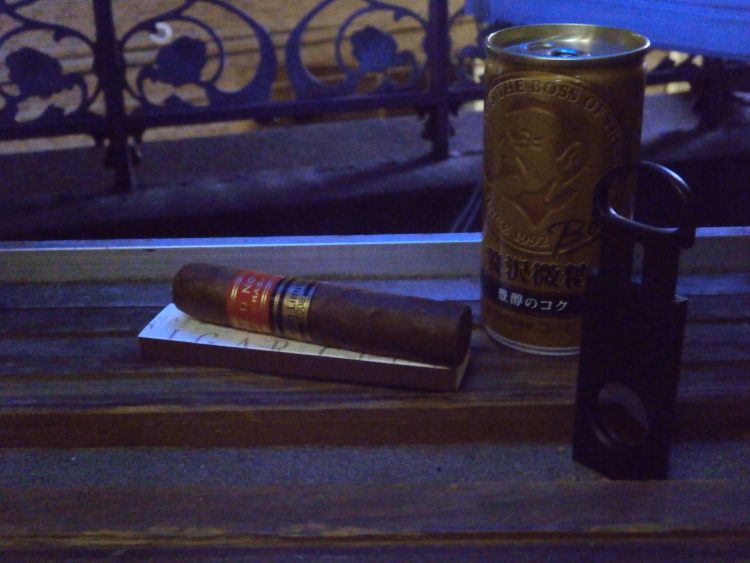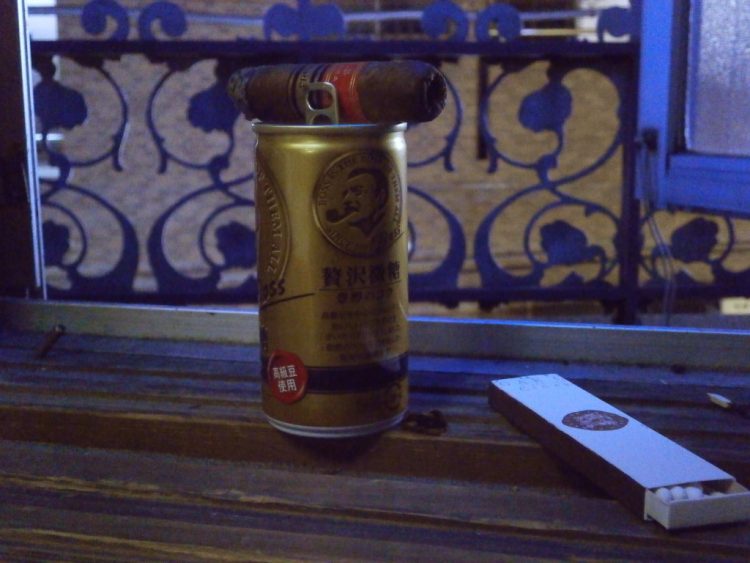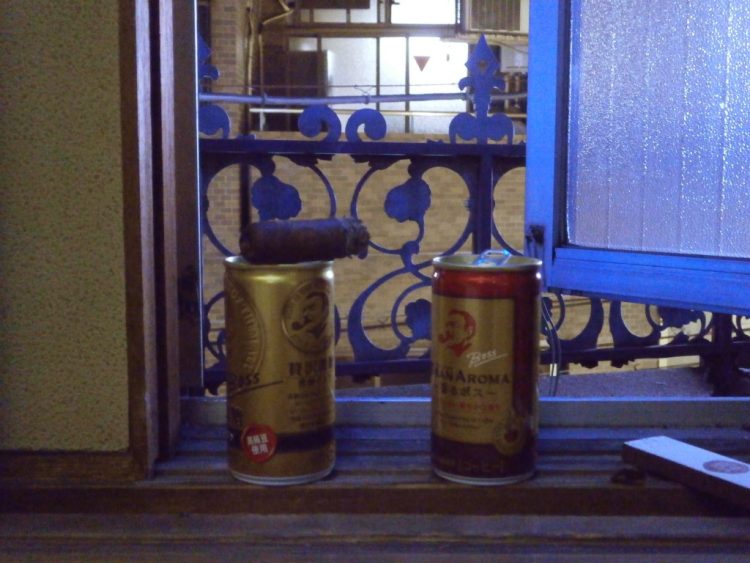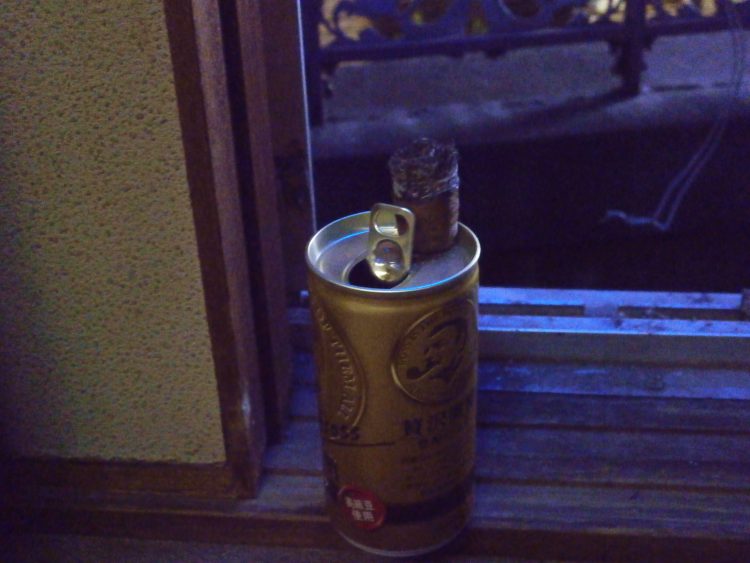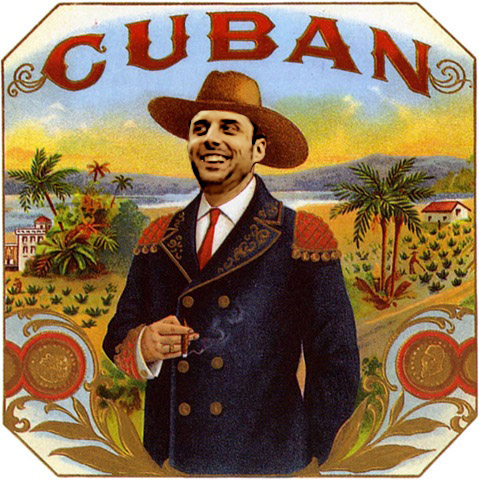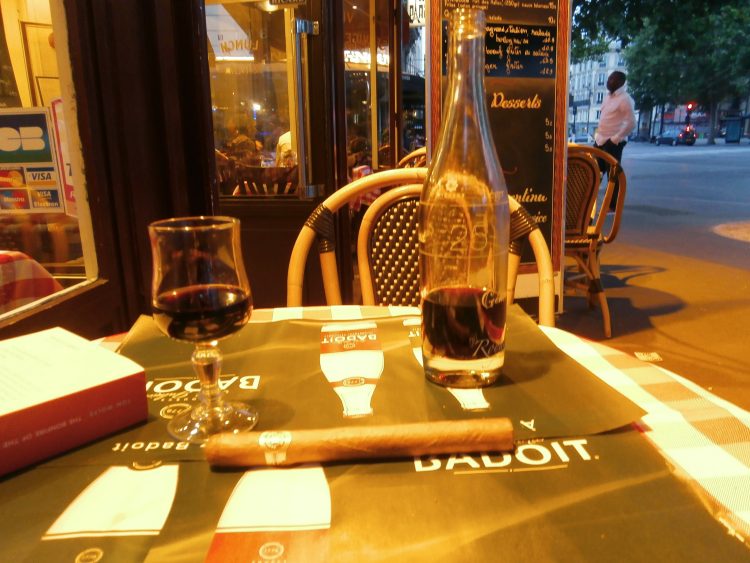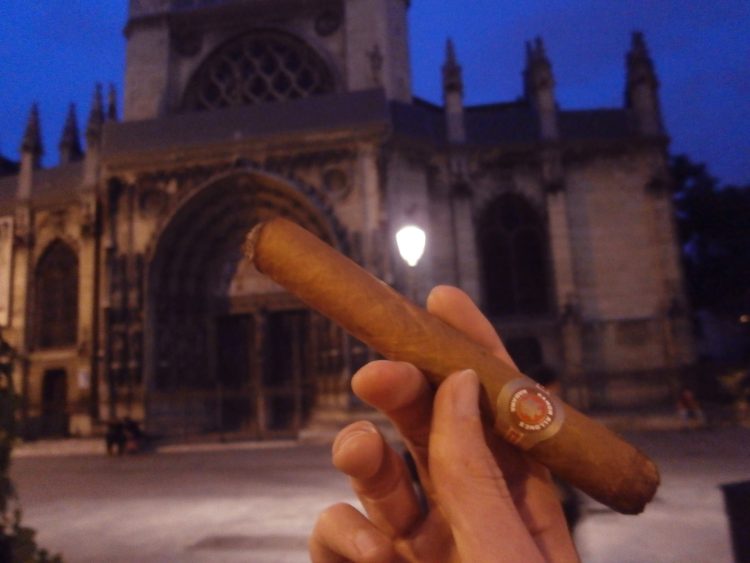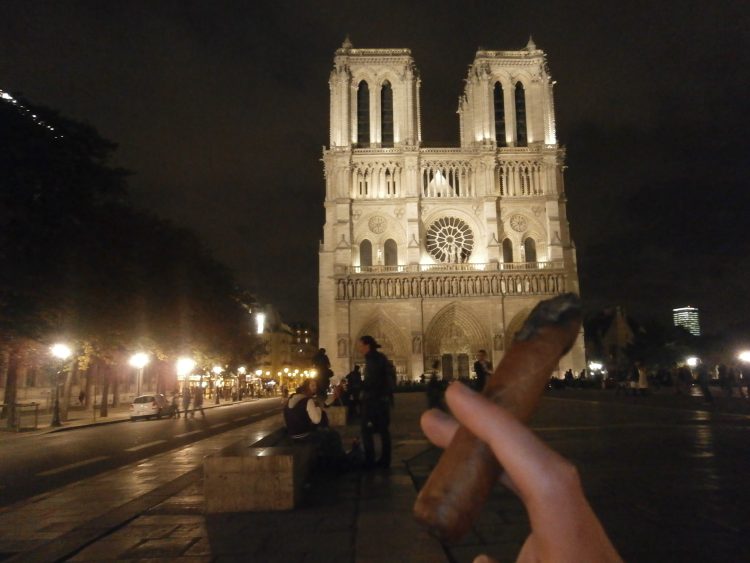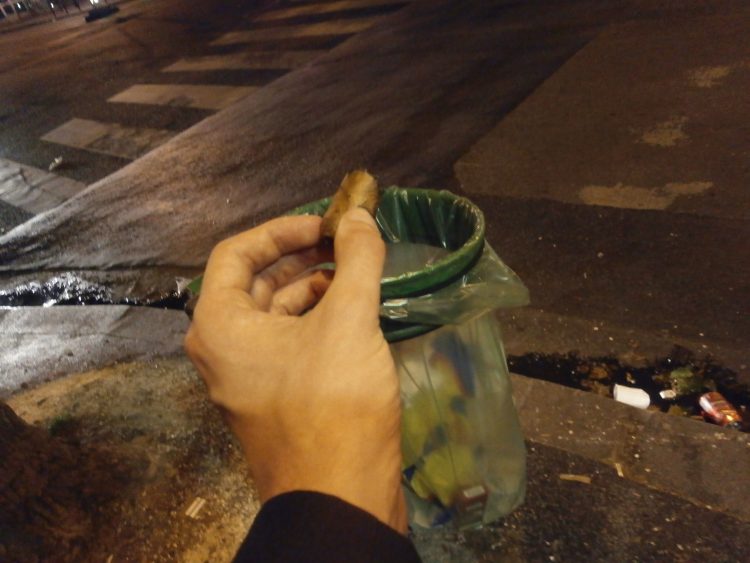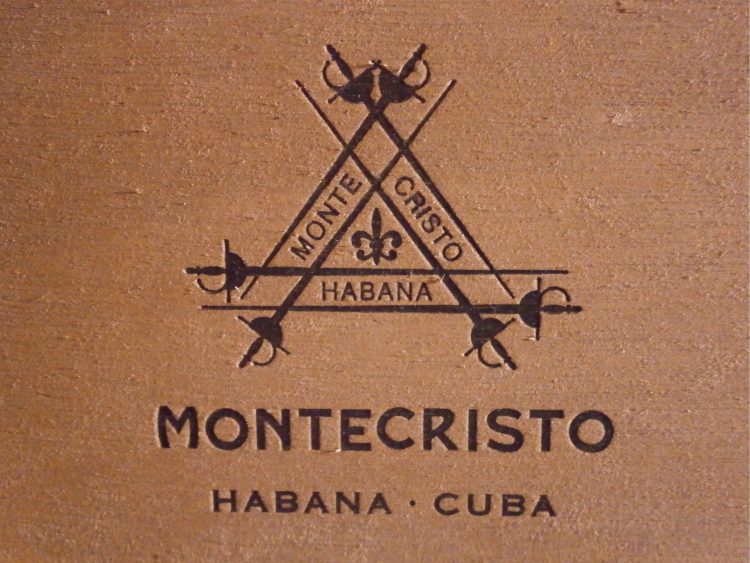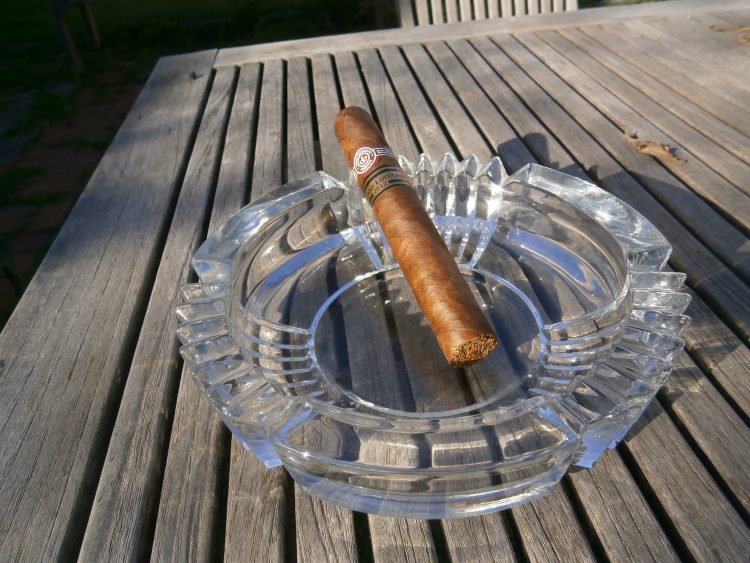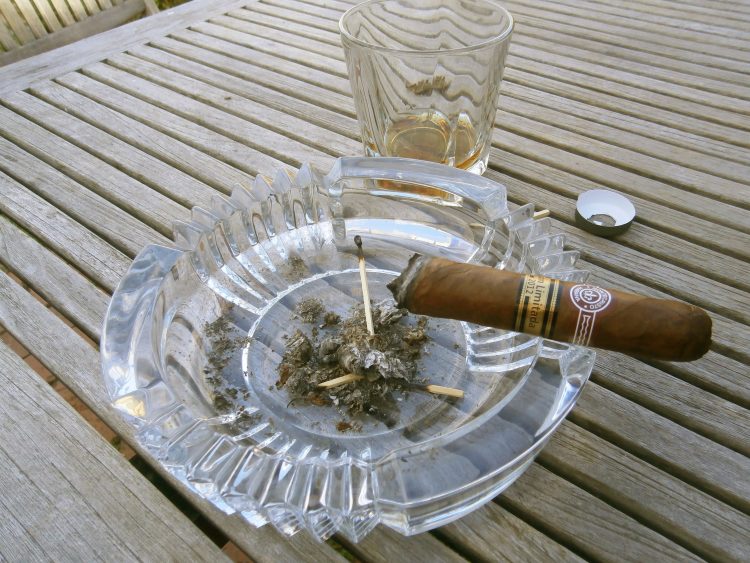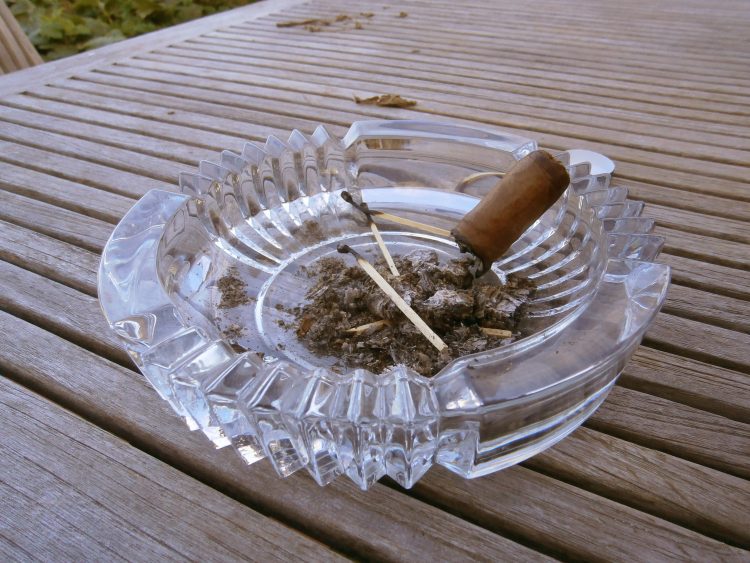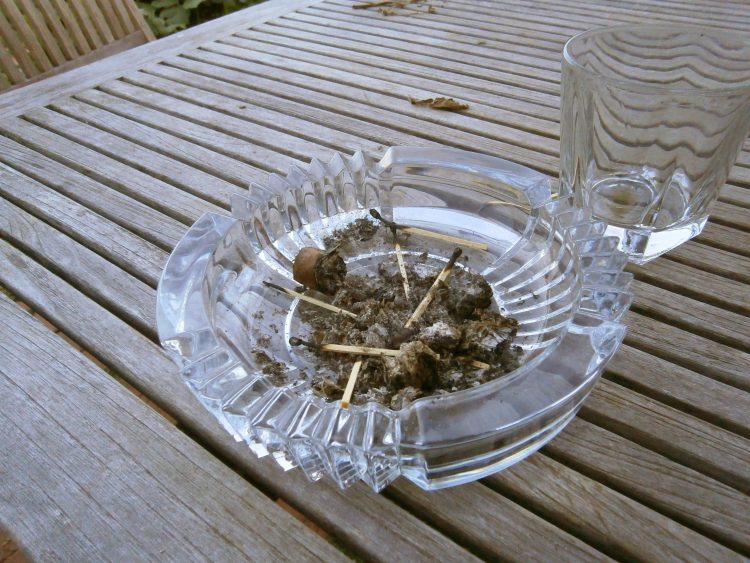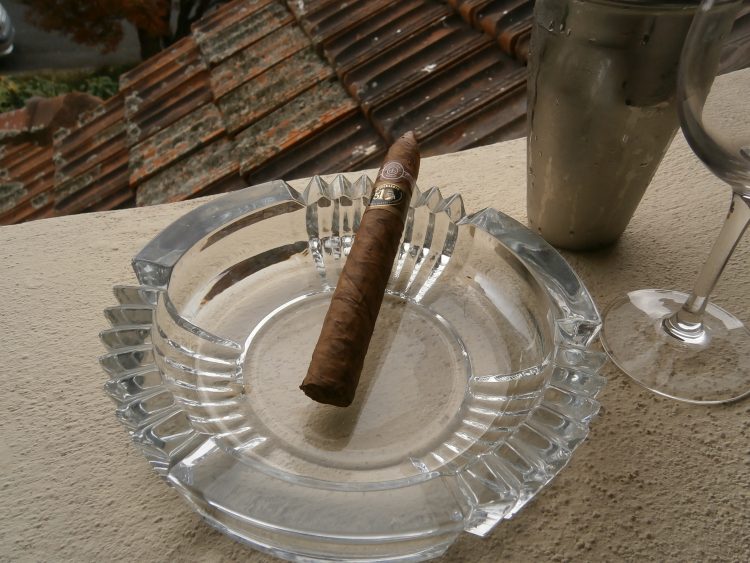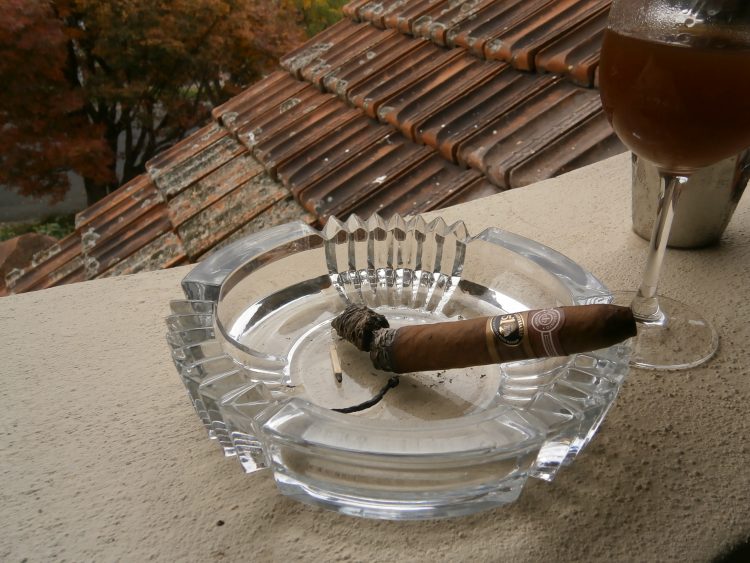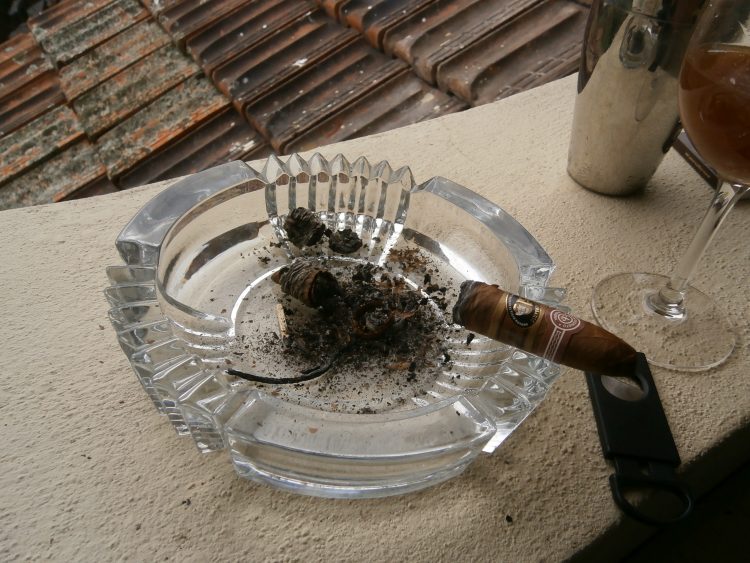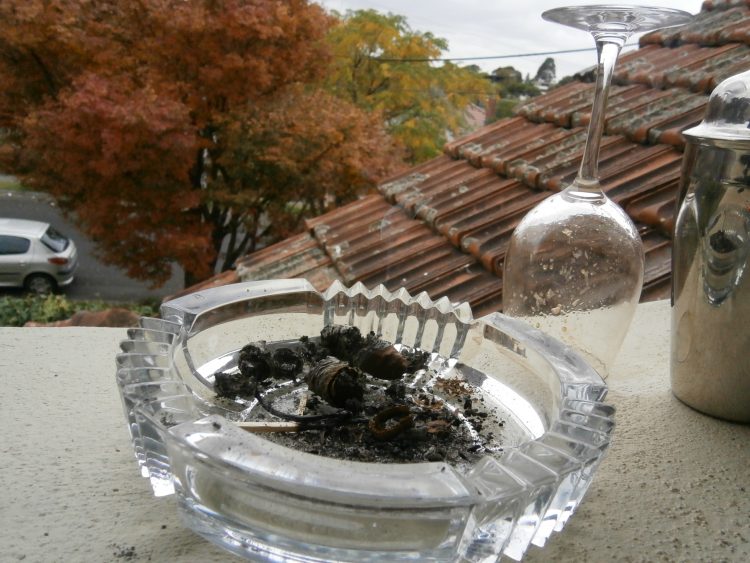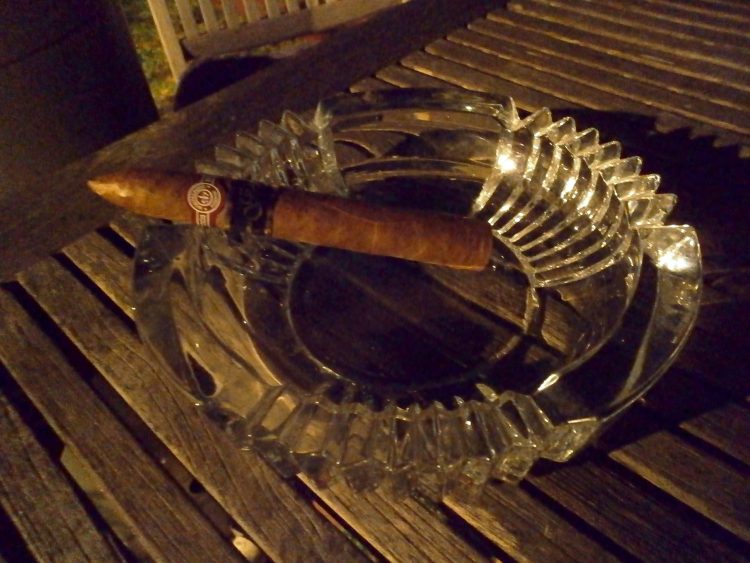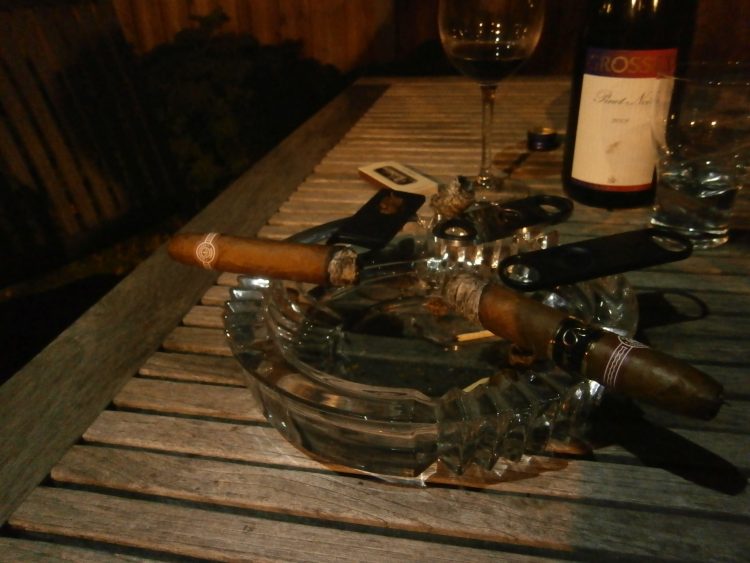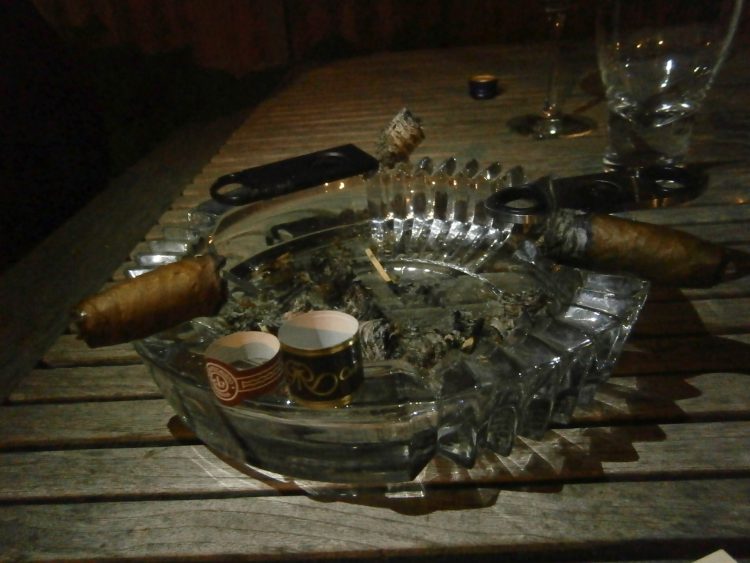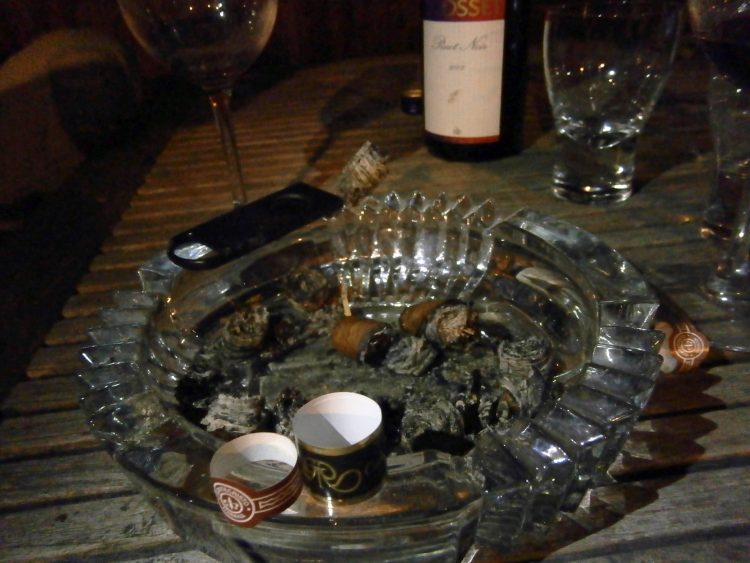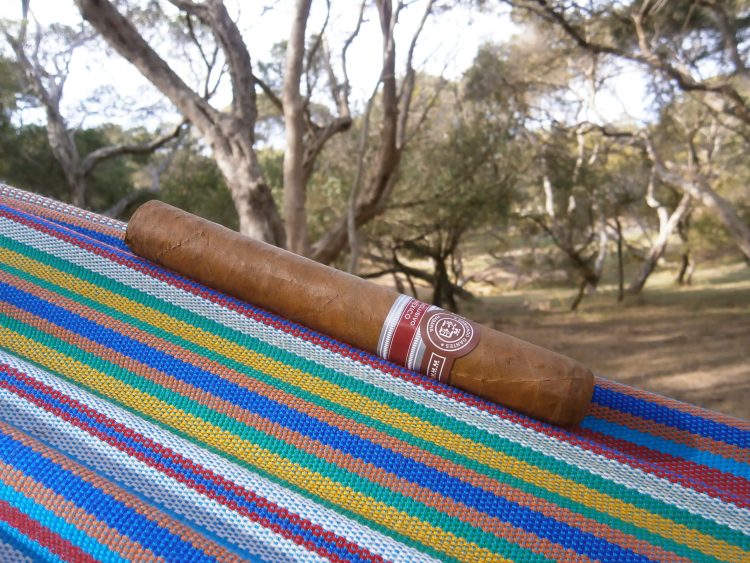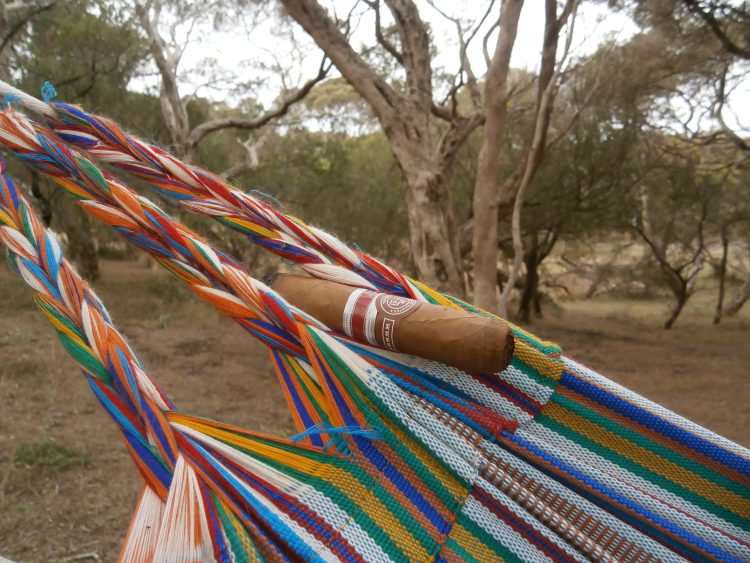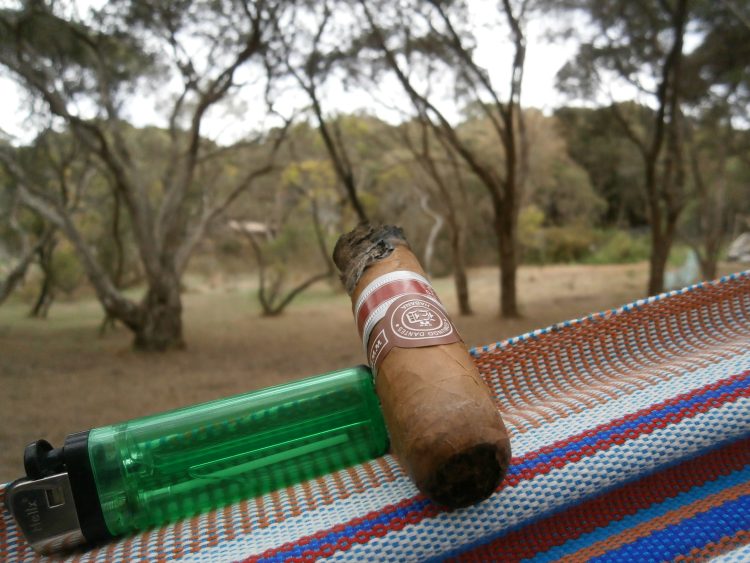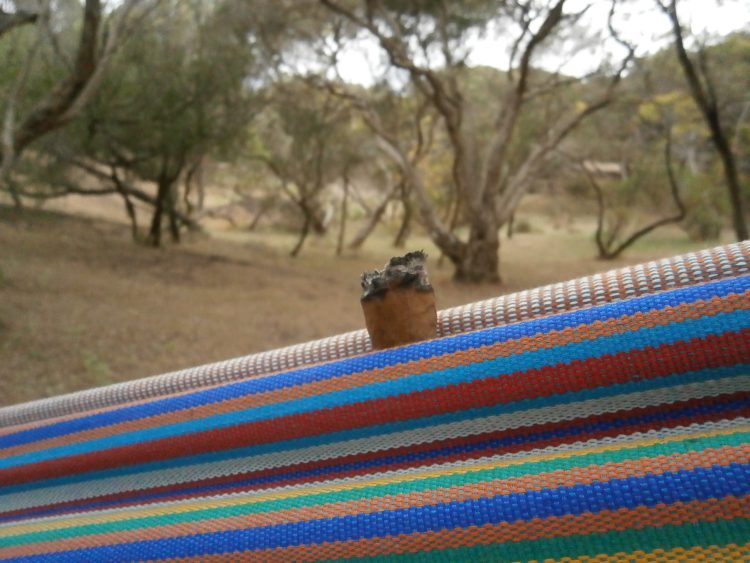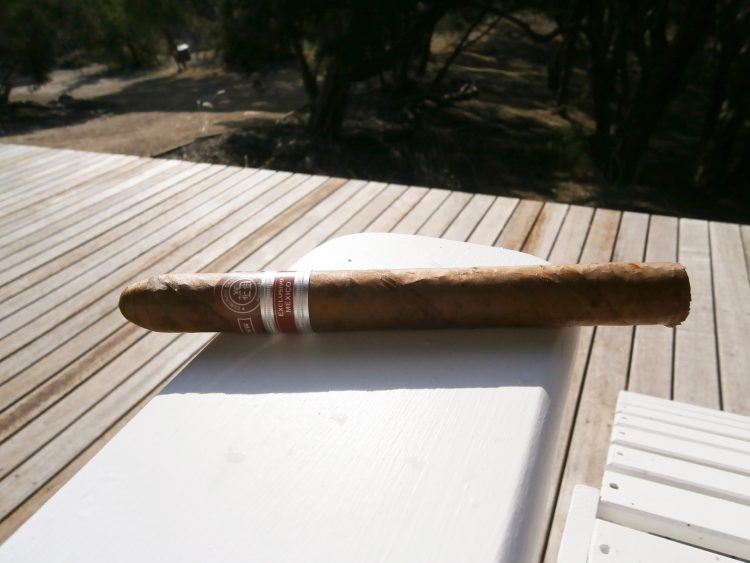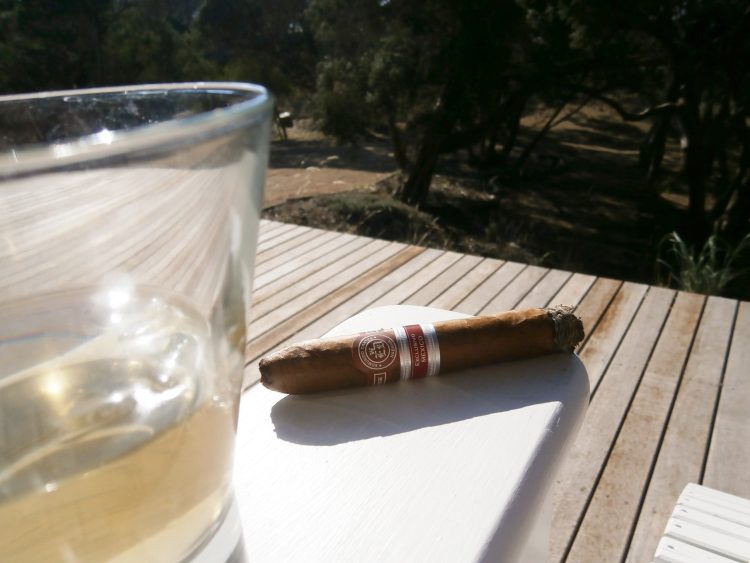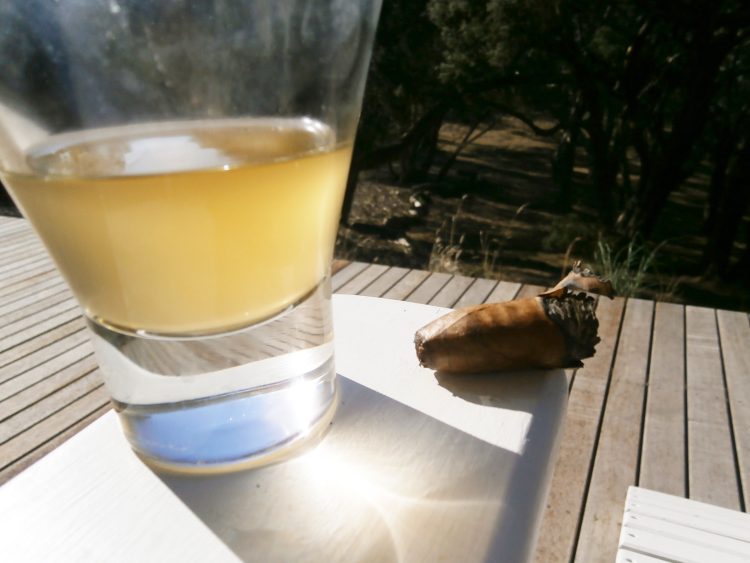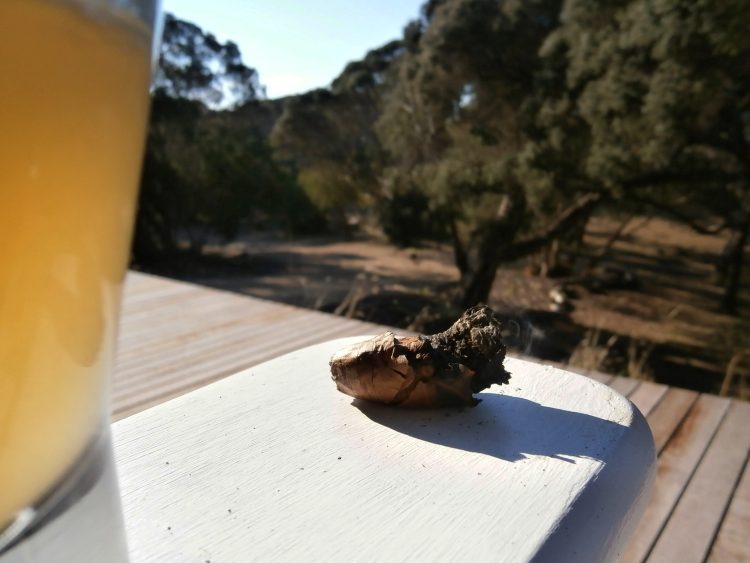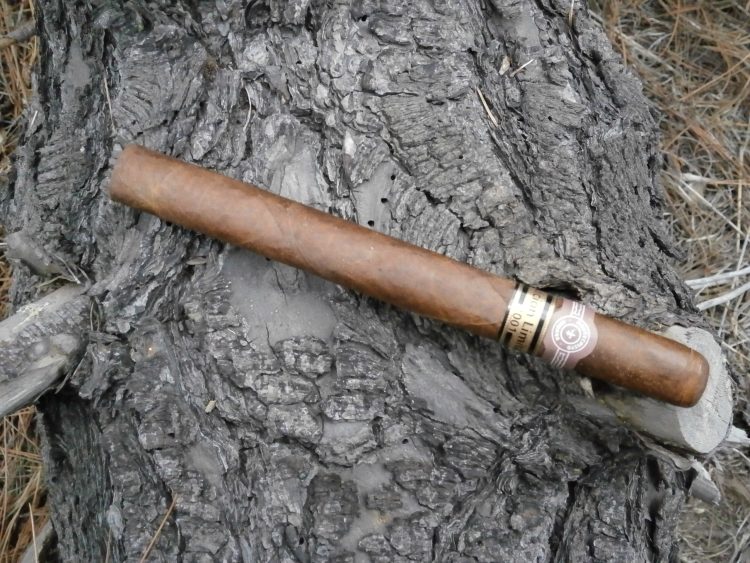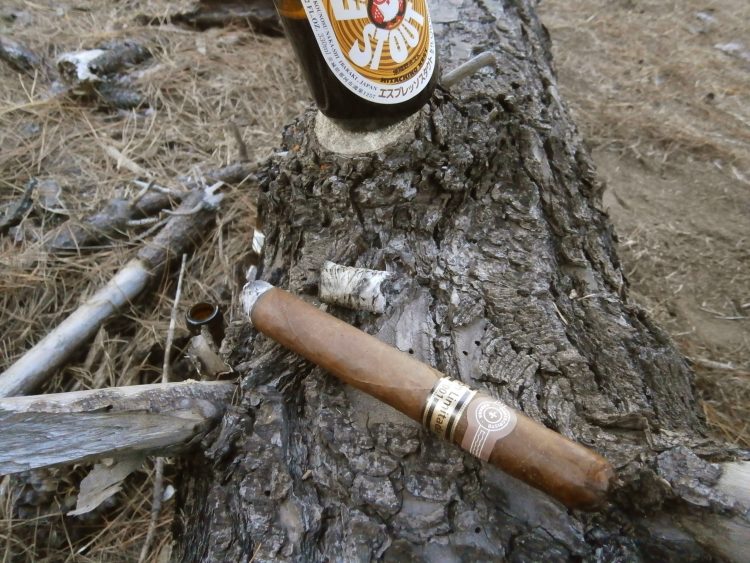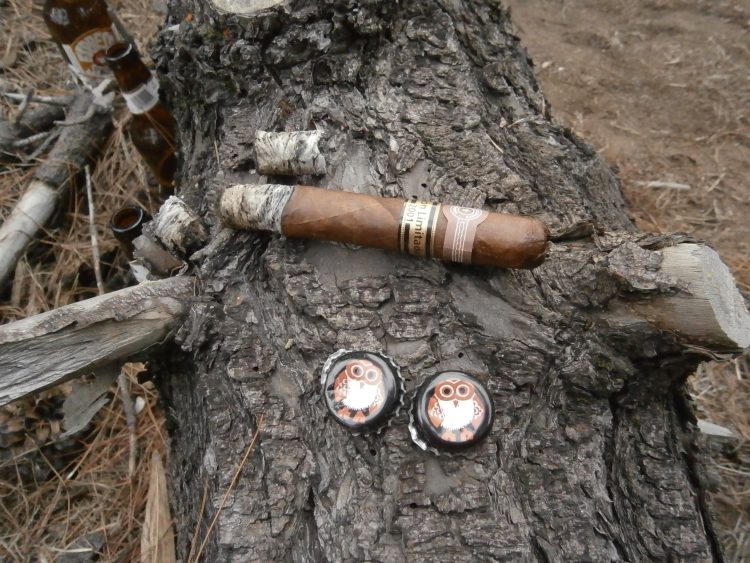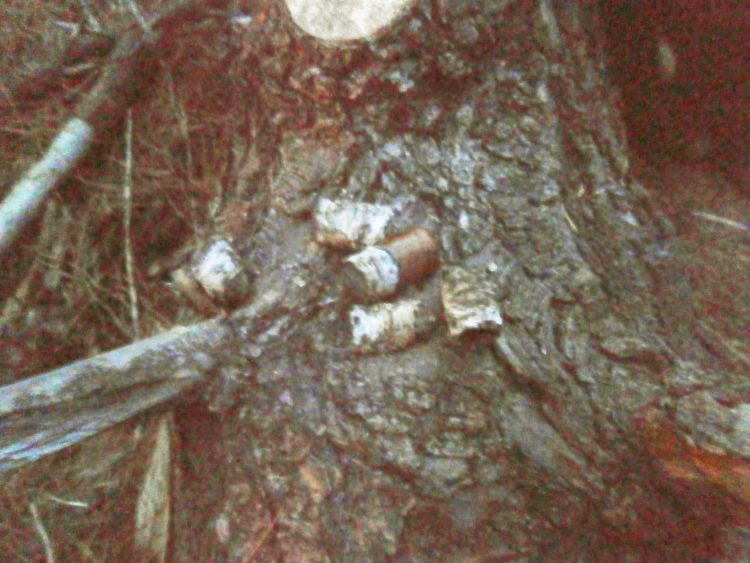I’m seated on a windowsill in Osaka, Japan, a town I lived in for a year half a lifetime ago, and the scene of my greatest conquests and my deepest defeats. It’s raining softly, a symptom of a typhoon that has been lingering uneventfully off the coast for a few days.
My cigar today is a Partagás Serie D No. 5 Edición Limitada 2008, appropriately named at 50×110. It’s very squishy, and might not be in the best condition (it has been in my travel humidor in tropical climes for two weeks now). When I peel the cap a great round pellet comes away with it, leaving an exceptionally deep and well defined divot (forgive me if I’ve gone into this before on A Harem of Dusky Beauties, but a divot caused by a round pellet of tobacco concealed under the cap is a signature move of some high grade rollers, and generally a good sign when it comes to cigar construction).
I’m in town for an old friend’s wedding. Today is the sixth day of the associated bender, and I’m suffering accordingly. It’s around five PM, I’ve been awake for four hours, and my first drink is around two hours away (I’m meeting some friends for what will surely turn out to be a very boozy dinner at seven). I’ve been able to keep down food since about two o’clock, and got my fluid levels back to normal around three, but I need to get a little nicotine and caffeine into my system before my pluck is restored and I’m ready to fall back off the wagon. I’m pairing the cigar with a Suntory Boss canned coffee from the vending machine downstairs. I chose Boss for two reasons: firstly because they had a picture of Tommy Lee Jones promoting it on the machine, and secondly because their advertising copy leaves no room for second places: “Boss is the boss of them all.”
The cigar begins very nicely, smooth, almost a hint of chocolate from the first puff. It unfortunately falls off from there, and by the time I’m a centimetre in it presents the typical earthy cedar PSD flavour with a mildly unpleasant acidity.
It’s a wonderful country for love, Japan. In Australia a 5’6” woman is considered to be a healthy weight at 60kg, but in Japan the same girl would be considered morbidly obese over 45kg. Those nymphets with their almond eyes and smooth rubber skin, the ones who never leave the house without five inch stilettos and an hour of hair and makeup, are unable to see me for the pencil-necked geek that I am. To them, I resemble Tom Cruise or Johnny Depp or whatever western movie star girls are into these days. The Japanese society is one of rules, where people act according to tradition, and everything has its place. The Japanese don’t have the same deep set stigmas about pre-marital sex that we do in the west; in traditional villages they still have an ancient custom known as night crawling, where if a father sees that his daughter has a suitor he approves of he will leave her bedroom window open at night. If a naked man is found in a house after dark it’s considered to be a perfect defence against a charge of burglary: he was only night crawling.
The rules governing relationships are complicated. Most people meet each other through friends, and go out on group dates where one person will be designated king and gets to decide who sits with whom, what food is ordered, what games are played and so on. The rules state that the third date is the sex date: if a girl agrees to go out with you three times, you can guarantee that on the third occasion she’s wearing nice underwear. Of course, the huge advantage to being a gaijin scumbag is that you don’t know the rules. Where Japanese men wrap themselves up in knots of respect and tradition and gifts and signals, western men, who have cut their teeth in a society where confidence and directness is key in romance, can cut through the rules and catch the girls off-guard. It’s a huge advantage.
At the half way point the cigar is very nice, very smooth coffee with some sweetness, and notes of citrus in there. I switch my beverage to Boss ‘Gran Aroma.’ It’s sweeter than the boss gold. Sweeter and smoother and it has a slight aftertaste of sour milk. It is not the boss of them all.
There are clubs specifically for foreigners (or more specifically, for foreign men and the Japanese girls who want to meet them), but I didn’t care too much for those – what is the point of being a foreigner if you go to the one place that’s full of other foreigners? I remember one night I was in a local club, the only white guy in the place. It was a techno show, very loud, with smoke machines and lasers and video screens all over the place. I was dancing on my own with my eyes closed enjoying the viscera; the noise, the smells, and the radiant heat of my fellow beings, when I noticed that I was having a suspiciously large amount of accidental body contact with the supple willow in front of me. I put my hands around her waist and smelt her hair and for half an hour or so we danced close, exploring each other’s bodies to the music. I pulled her into the shadows at the edge of the dance floor and kissed her hard, our bodies grinding rhythmically, a simulacrum of the sexual act to come. I took her by the hand and led her from the club. She came, but after a block or so she stopped asked me something in Japanese, the first words to pass between us. I didn’t understand but showed her my ID card, hoping that she would glean from it that we were going to my house and that it was close. The next words that passed between us occurred when we were sitting on my bed: I started to unbutton her blouse and she stopped me while she furiously typed something into her phone, eventually showing me some English word salad and looking at me quizzically. We communicated as I imagined early explorers did with aboriginal peoples: I pointed at myself and said my name and then pointed at her. She looked at me blankly and we both laughed.
In the morning she cleaned my house a little and put her name into my phone, the only name in there in kanji. I asked a friend once and he told me her name was Takako. She had a friend text me a few times, but it never went anywhere.
The cigar has fallen off a little from its midway peak, but it’s still very acceptable. Coffee predominates, but there is a strong herbal earthiness in there as well, and a little more bushfire than I’d like.
Less than 100m from where I now sit was the end of Audrey (she of Ramón Allones Gigantes fame) and I. We saw each other off and on for a few years after Paris. She worked a job organising conferences, and from time to time I would receive a late night SMS: “meet me at the Grand Hyatt. 10:30. Room 404.” I have never been as physically exhausted as I was after one passion filled day at the Airport Hilton.
She came to spend a week with me in Japan. On the second day I took her to the Tsukiji Fish Market. At the time gaijin were technically excluded from the tuna auctions, but we snuck in and watched men in bloodied aprons auction off man-size oceanic tuna, fresh from the water, for tens of thousands of dollars, their rich flesh destined for Tokyo’s finest restaurants. Afterward we ventured into the Miscellaneous Creatures Hall, a hive of scum and villainy, where myriad sightless beasts, hauled from the darkest depths of the earth’s oceans, spend their last few hours suffering in shallow plastic trays. She looked especially lovely that day, her porcelain skin and light blonde hair perfect in the dim lighting of that cavernous place. As I walked behind her down a narrow aisle I noticed a peasant fishmonger staring at her with a look of such lust, of greater lechery than I have seen on the face of any man before or since. Something in his gaze sowed a seed of jealousy in me, a feeling of inadequacy. The whole rest of the week I mistreated her. I refused to accompany her shopping, or to any but the most convenient of sightseeing expeditions. At the end of our time together I took her to the airport train, and before she walked through the gates she sarcastically said “thank you for a magical week,” our private term for our time in Paris. A few days later I received an email that began “I’ve decided not to see you anymore.”
Our paths have crossed precisely once since then, on a street in Melbourne, years later. She saw me and crossed the road.
The last few centimetres are sulphur and tar, but it’s not unpleasant enough that I don’t relight it when it goes out with a centimetre or so still smokable. The extinguishment does it good; the flavour cleans up, there’s no more tar. I’m already fifteen minutes late for my dinner date, but I gotta take this guy to the limit. Very nice.
Better than a PSD4.
Partagás Serie D No. 5 Edición Limitada 2008 on the Cuban Cigar Website.
